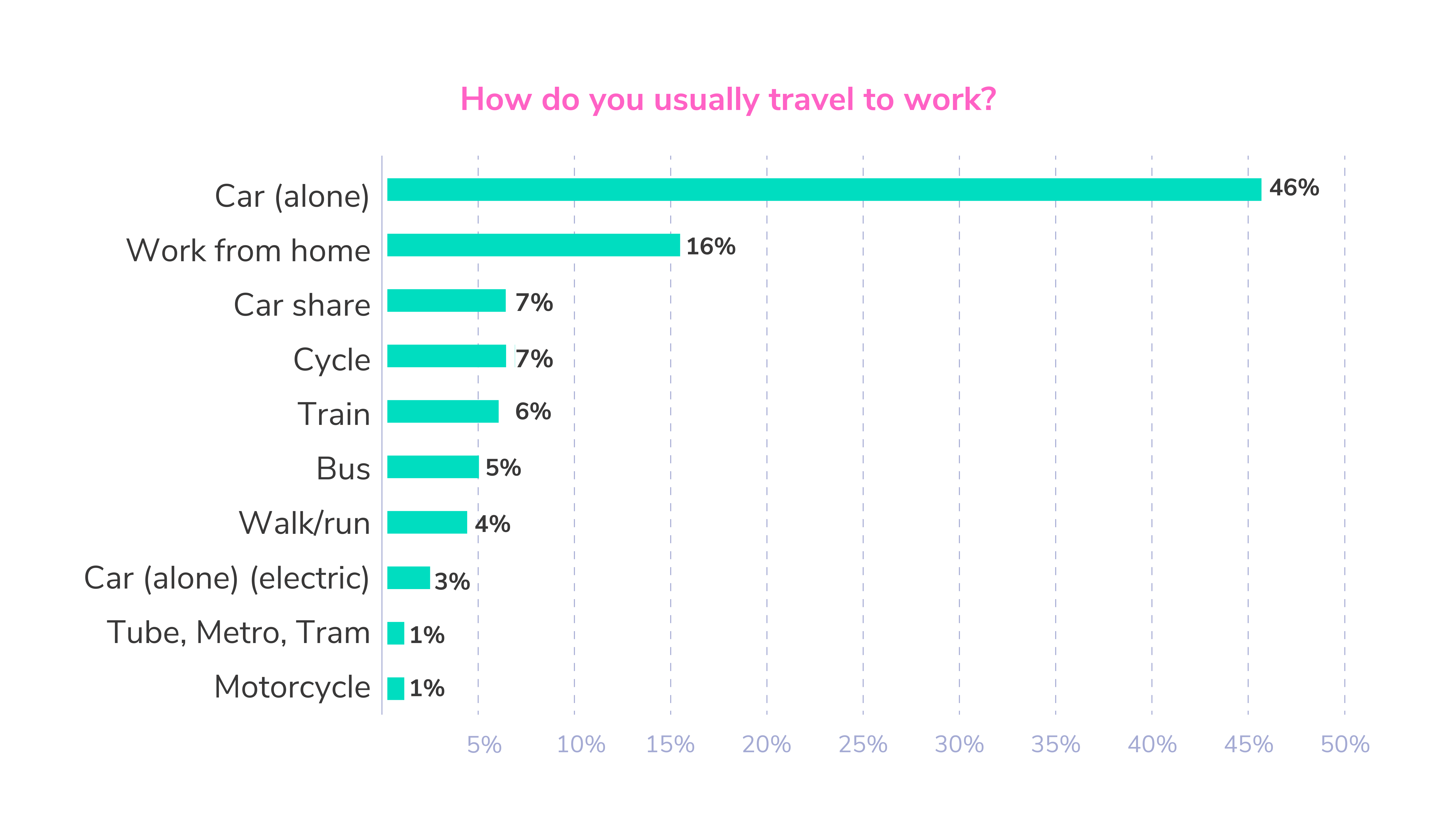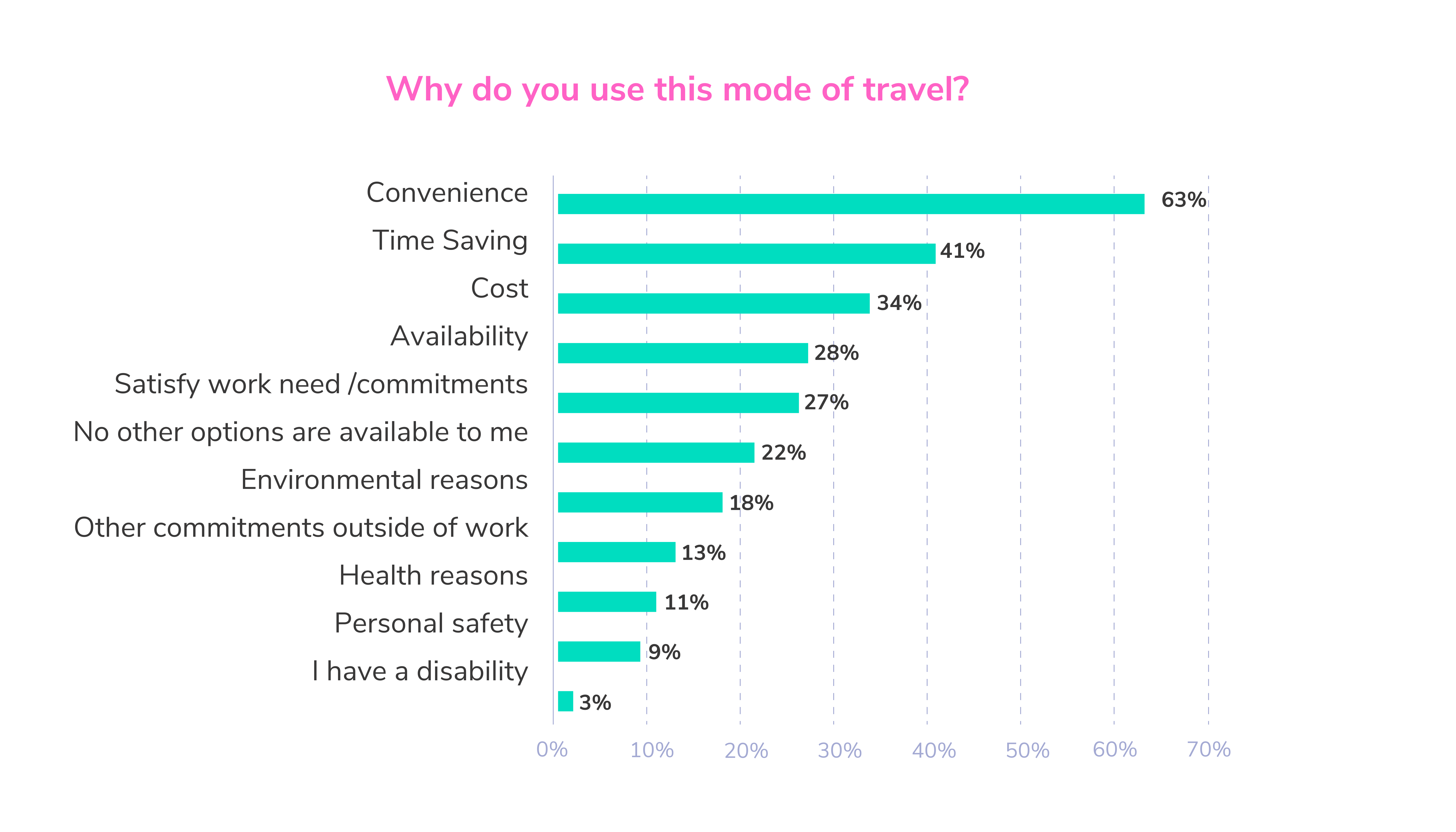INSIGHT ARTICLE
2022 Commuting Census Survey: An executive summary
Inertia has fuelled the climate crisis for too many years. Worryingly, the Mobilityways Commuter Census 2022© suggests we’re on a path to more of the same if we don’t collectively act now.
The UK Government’s long-awaited Decarbonisation Plan was launched in July 2021. This document was written at a time where there was so much uncertainty around the future of post-pandemic working, with large employers still formulating their stance on remote, hybrid and in-office working.
According to our Census, aside from a sustained interest in home working, the ‘new normal’ looks strikingly similar to the old one. Collectively, we must come together to make zero carbon commuting a reality.
Remote working remains – but for how long?
ONS reports revealed that nearly half of all employed people worked from home during the height of the pandemic in 2020. The data gathered in the Commuter Census shows that there has been a clear shift to hybrid working practices with just 16% of our Census respondents now exclusively working from home.
Many of these remote workers also believe they won’t continue to work from home to the same extent long-term. When we asked them how they thought they’d be commuting in the future, ‘remote working’ reduced to 14%. It appears the lasting change in travel behaviours is not in modal-
shift, but rather the regularity of commutes being undertaken. During the pandemic, a YouGov survey found that 91% of remote workers wanted to continue working from home at least part of the time after restrictions were lifted.
These sentiments were mirrored in the Mobilityways Commuter Census 2021. When asked how they planned to travel to work next year, 26.8% of respondents said they would be working from home for the majority of the time. The 2022 Census confirms this has been the case, with 49% of respondents commuting a maximum of just two days a week.
The car remains king
Frustratingly, the CO2e savings from increased home working have been negated by commuters now choosing worse emitting modes when they do go into the workplace. Old habits die hard it seems, and single occupancy car commutes continue to dominate the mobility landscape with 46% of commuters driving alone in traditional cars, i.e. those with an internal combustion engine. Interestingly, EV drivers made up just 3% of commuters, despite a 92% increase in EV sales since 2020, according to EV charging app, Zap Map.
Solo drivers of traditional vehicles and EVs combined made up 49% of all commutes in 2022. This is notably similar to single occupancy commute levels recorded in the Government’s 2011 census.
This will no doubt be a blow to sustainable mobility activists who felt they were making progress over the last decade before the pandemic hit.A number of survey respondents cited proximity concerns with regard to shared transport, such as car sharing, trains, tubes and buses, which would account for a rise in single occupancy vehicle commutes. It’s clear more work needs to be done to alleviate these fears if we hope to see an uptake in these modes.
This data indicates that much of the modal-shift observed during the pandemic, such as increased walking and cycling, have not become permanent. Collectively, these behaviours have contributed to a worse national ACEL (average commuter emissions level) post vs pre pandemic.

You might also enjoy:
Cost of living and commuter trends
Analysis of half a million postcodes shows latent potential of the sustainable commute
External factors shaping commuting trends
Despite conventional wisdom around workers not having adequate commuting options – the Commuter Census data clearly shows a significant majority of commuters (63%) are predominantly driven by convenience.
While it’s little surprise that convenience, time and cost continue to be the key drivers of our commuting behaviours, it’s also important to consider the external pressures dictating the future of the commute. This year, commuters were blighted with a series of external events that continue to noticeably impact travel behaviours – and may continue to shape them long into the future. As discussed further in the article Cost of living and commuter trends.
The repercussions of Russia’s invasion of Ukraine caused rapid increases
in the cost of fuel across the UK. Against a wider backdrop of high inflation, many people sought, and continue to seek to save cash as the cost-of-living soars. Prices threatened to reach all-time highs of £2 per litre, leaving many wondering if they’d be able to afford to use their cars at all.
The vast majority of commuters (61%) proclaimed to be ‘very concerned’ about rising fuel costs. These prices don’t just impact motorists. Public transport operators are expected to lock in fuel purchases at higher rates for the next year, further burdening the millions who rely on these modes.
Public transport users were shown to be the least satisfied with their commute, with many expressing frustrations with slashed services affected by strikes.
As I walk quite a big distance, I wouldn’t mind using a bus from time to time. However, the times are so infrequent. Sometimes there are no buses driving past me, sometimes there are multiple ones. I can’t afford to stand at the bus stop to see if something is going to arrive as I would be late for work.Natalie from Cheltenham, Survey respondent

A cause for hope
For all the struggles of the pandemic, it did show that where there was a need, it was possible to drastically change our habits. In our analysis, we’ve identified that the vast majority of commuters (81%) would consider an alternative to their current mode, with the main factor in their current choice being “convenience”.
This appetite for change is a cause for hope, turning intention into action
is where the challenge lies. Arguably, it’s every employer’s obligation to facilitate sustainable commuting within their organisation. Employers who support and incentivise their teams to do so generate benefits for everyone involved; from financial cost and environmental savings, to increases in productivity and engagement. This is why forward-looking organisations are now proactively seeking to reduce commuting emissions and are making good progress in their net zero goals.
There’s never been a better time to reduce your car use and travel actively. This includes business leaders supporting their employees making the active travel choice, schools working with parents to walk instead of drive, and family days away being made doable by public transport.Xavier Brice, CEO of active travel charity Sustrans
Start your Zero Carbon Commuting journey with a free consultation with one of our Commutologists
Get in touch now
Tell us a little more about your company, and we’ll call you back.